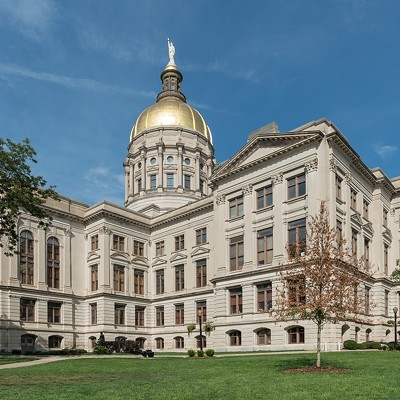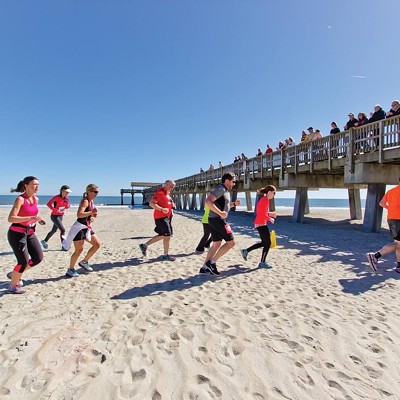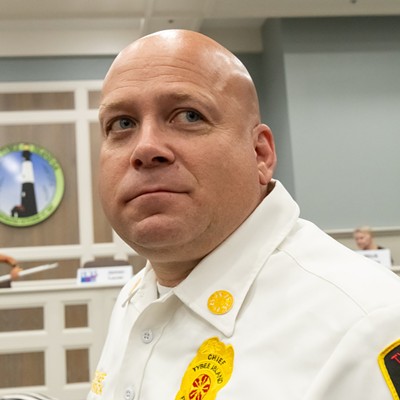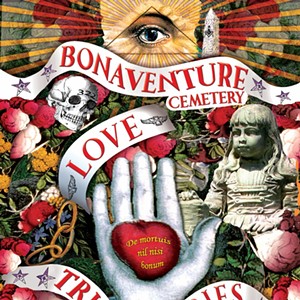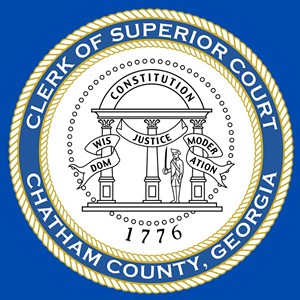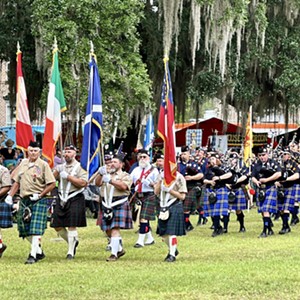Keysha Cutts knew exactly what she wanted to be when she grew up.
"I knew when I went to high school that I wanted to be an engineer,Î she says. ìI like to play in the dirt."
Today, Cutts is a civil engineer in the regulatory division of the U.S. Army Corps of Engineers, Savannah District. "I work in the field office in Atlanta, issuing permits," she says. "I enjoy my job, I enjoy the people I work with and I love being an engineer."
Cuttsí first job took her far from home."ìI moved from my momís house to Alaska all by myself," she says.
"It was lonely, it was dark, it was cold," Cutts says. "But it was the best experience of my life."
In Alaska, Cutts worked on a missile defense program, Her next job was with USACE.
"I enjoy turning theory into practice," Cutts says. "I didn't like math, but that didn't matter because I had a goal. We need more females in engineering to make it more diverse. Women add a different type of flavor."
The Corps has been actively encouraging young women to become engineers. Less than 10 percent of American engineers are women, and while women, minorities and people with disabilities represent two-thirds of the American workforce, very few of them work in science, engineering and technology.
That needs to change, in light of the growing demand for qualified engineers. Jobs that require science, engineering and technology are the most rapidly growing jobs, however, there soon may be a major shortage of skilled workers.
USACE estimates that if women, minorities and people with disabilities participated in these fields in parity with their percentages in the total workforce, they would almost meet that growing demand. On Feb. 23, a group of USACE employees presented programs at West Chatham Middle School and Johnson High School to encourage all students -- especially girls -- to think about engineering as a career.
In the 19th century, engineers learned through on-the-job training at machine shops, railroad yards and surveying crews. "They worked with machines," says Sherry McCumber-Kahn, an environmental engineer. "Women didnít participate in heavy lifting or work of that type, so they didn't become engineers."
Today, engineers hold many different types of jobs. Monica Simon Dodd is a civil engineer in the USACE, Savannah District, planning division. "Most people think an engineer works on highways and bridges," she says.
Much of Doddís work concerns the environment of the Savannah River, and involves correcting past engineering projects that have had a negative impact on the environment. "The Corps made navigational cuts so ships could navigate," Dodd says.
"Now we see that this caused problems with the surrounding environment," she says. "In the Savannah National Wildlife Refuge, an area was dried up unintentionally."
Today, those areas are being restored. "Just by doing some simple things, we are restoring the flow into that entire area," Dodd says.
Susan Brinson is a civil engineer in the USACE master planning branch. "Neither of my parents had the opportunity to go to college," she says. "They had three children, and it was understood that we would go to college."
Brinson's brothers were older, so she was able to learn from their experiences. "My older brother went into business, and my younger brother decided to be a geologist," she says.
"I liked science and math," Brinson says. "My brother got to go on field trips and collect rocks, but after graduation, he had trouble getting a job."
Brinson considered other opportunities."I decided to go into civil engineering," she says. "It's a nice combination of math and earth science, but you're able to get a job."
Vicki Gatling, a general engineer with the project management division, had a unique experience at West Chatham Middle School -- her daughter, Amber, a seventh grader, was in the audience. Engineering is a family tradition -- Gatlingís husband, brothers and sisters are all engineers.
"Amber has already been introduced to engineering," Gatling says. "We talk technical stuff at the dinner table."
In school, Gatling devoted herself to studying. "Only you can direct your goal map," she told the students. "You should set up five, 10 and 15-year goals."
In high school, Gatlingís goals were to design her own prom dress and travel overseas -- and she reached them. "Write your goals on paper," she says. "As you accomplish them, mark through them. You've got to have a road map to know where to go."
Because she liked science and drawing and design, Gatling chose engineering. It wasnít an easy decision.
"There were about 50 females in my freshman class," Gatling says. "By our sophomore year, that number was down to five. Only three graduated. Sometimes, I was the only female in a class. It was an uncomfortable feeling and a challenge. Females are not given credit for the things they do or the things they are capable of doing. Decide what you want to do, start working and hang tough."
Gatling took this effort beyond the classroom. She sought out summer jobs that would give her valuable experience as she worked toward her goals.
Despite the challenges, engineering can be fun, Gatling says. "There is a lot of travel and you meet a lot of people," she says. "But there also is stress and dealing with upset people."
Overall, Gatling loves her work. "You don't have to be an A student in math and science," she says. "Just make sure this is your heart's desire and focus on it and dedicate your time to being what you want to be."
The path to an engineering career is particularly tough for some women. Letitia 'TitaÎ' Shuman had very little encouragement to get an education.
"I come from a very poor background," she says. "I was raised by my mother and grandmother.
"No one ever really worked, except my grandfather, who died when I was seven," Shuman says. "I knew he worked for the Corps of Engineers.
"Getting an education, getting a job was never pushed on me," she says. "I did well in school, but was never motivated to do it."
At age 16, Shuman took a part-time job. "I started working because I wanted stuff," she says. "I worked as a cashier at the Piggly-Wiggly in Pooler. Then I started waiting tables until it came time to go to college."
Shuman had opportunities, including scholarships. "I enjoyed math," she says. "I thought I wanted to be a doctor."
Then Shuman discovered a group of students who were studying to be engineers, and changed her own career path. "While I was in college, I worked full-time and went to college full-time," she says. "It was a lot of hard work."
After graduation, Shuman took a job with the Corps of Engineers. "It really pays to work hard in school," she says. "This is the easiest job I've ever had, but I worked really hard to get it.
"I'm the only person in my family to go to college," Shuman says. "I'm one of the few who graduated from high school. Even if you don't hear about education at home and no one else tells you, it's out there."
As a coastal engineer, part of Shuman's job is to see that the Savannah River is dredged. "We find a lot of interesting stuff," she says, displaying prehistoric sharks' teeth, horse teeth, a mammoth's tooth, and vertebrae.
Not everyone at USACE is an engineer. Judy Milton is an architect in the engineering division. She says architects work with a future buildingís owners before making a design.
One of an architectís chief duties is public safety, Milton says. "It is our responsibility to make sure the people in the building are safe," she says.
"The biggest danger in a building is fire," Milton says. "We also must make sure there is access for people with disabilities.
"You have to be creative and able to visualize things three-dimensionally in your head," Milton says. "You put the building together in your head and draw. You need to communicate well, speak well, write well and listen well.
"My job is never dull," she says. "Every project is different. There is something new every day. It never gets tedious. And I have been able to support myself from the beginning."
Elizabeth Hilliard is an economist for USACE. "In order to be in any career field, it takes education and persistence," she says.
"In the 10th grade, I decided I wanted to get married and have children," Hilliard says. "I got married at 16, had a son and got a waitressing job."
At 18, Hilliard earned a GED, and did so well, that she decided to go to college. "I started at AASU the next year, and eventually got two bachelorís degrees in liberal arts and economics."
Hilliardís work took her on a four-month tour in Baghdad with the Corpsí Gulf Region Division, where she worked on Operation Restore Iraqi Electricity.
"It was a voluntary thing," Hilliard says. "I was driven by the need to do something for my country. The events of 9/11 generated that for me.
"It was difficult, because I have 12 and 8-year-old children," she says. "Every day there were bombings and car bombs, but I'm very proud of my time there," Hilliard says.
"I'm also enrolled to earn a master's degree at AASU. Education and persistence pay off. Stay in school, it's the most important thing you can do in life."


